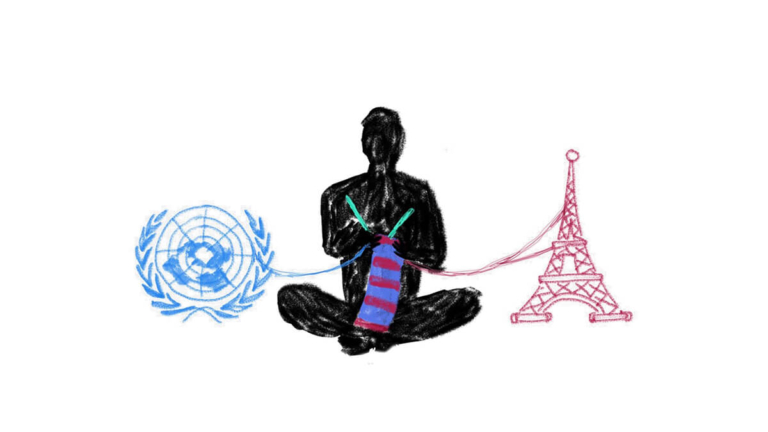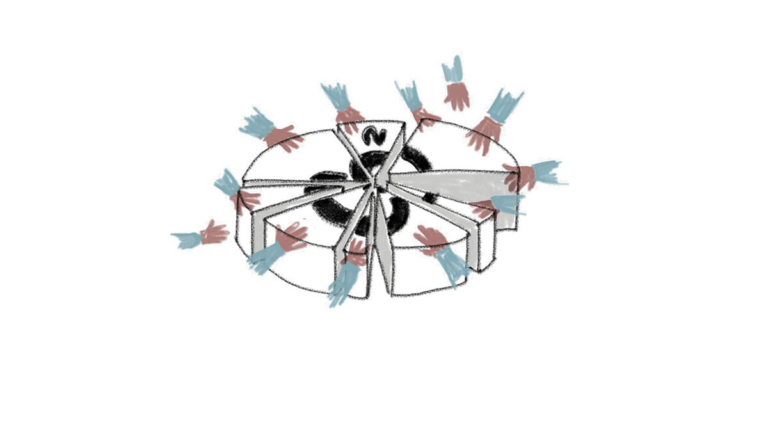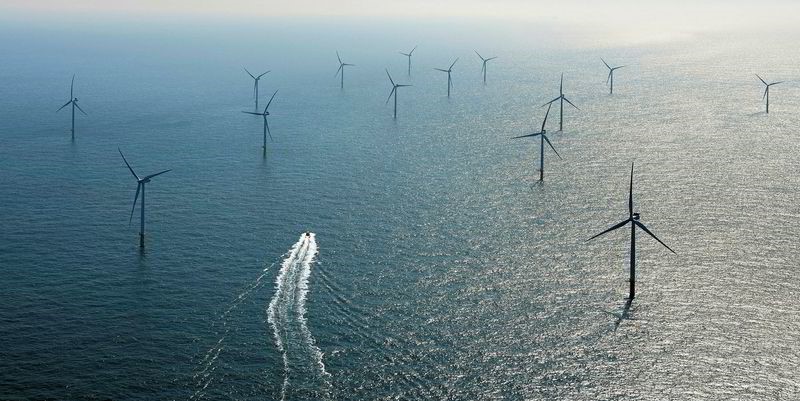Casebook Info
In a landmark ruling, the Court of Appeal of Brussels determined that Belgium and two of its regional governments had violated their duty of care and the rights to life and privacy by failing to sufficiently mitigate greenhouse gas emissions. To remedy these violations, the court ordered the defendant governments to cut their emissions by 55%, as compared to 1990 levels, by 2030.
- Year Filed 2015
- Year of Most Recent Ruling 2023
- Year of Final Ruling N/A
- Jurisdiction Belgium
- Court Name Court of Appeal of Brussels
- Primary Focus Mitigation
- Ruling On Merits
- Plaintiff(s) Klimaatzaak and 58,000 citizens
- Respondent(s) The Kingdom of Belgium, Walloon Region, Flemish Region, and the Brussels-Capital Region
- Outcome N/A
- Organizational leader of the litigation Klimaatzaak
- Link to the decision/ruling
Background
The Belgian Climate Case
In 2014, the non-profit organization Klimaatzaak, which means “climate case” in Dutch, sent formal notice to the Belgian state and its three regional governments— Walloon Region, Flemish Region, and Brussels-Capital Region— declaring that the governments were violating their duty to reduce greenhouse gas (GHG) emissions. (Klimaatzaak addressed the regional governments as well as the Belgian state because Belgium has a unique federal structure where the regional governments have powers on an equal footing with the federal government on certain issues, including environmental policy.) Klimaatzaak subsequently met with ministers from the four governments, but they failed to reach an agreement on reducing emissions.

So, in 2015, Klimaatzaak and 58,000 co-plaintiff citizens challenged the governments in court. De Spiegeleir noted that this was the “largest number of complainants allowed to act jointly in their individual capacity in a climate litigation case to date” (p. 5). (The plaintiffs filed as individuals because Belgian law has a restrictive legal framework for class actions.) The plaintiffs’ legal team included Roger Cox, the lawyer who successfully argued the famous Urgenda and Milieudefensie cases in the Netherlands. Cox helped to model the case after Urgenda, which secured its first win only a few weeks after Klimaatzaak was filed.
In their summons, the Klimaatzaak plaintiffs argued that the Belgian authorities had violated their human rights and the governments’ ‘duty of care’ by failing to sufficiently mitigate greenhouse gas emissions. They based their argument on three legal bases: 1) articles 1382 and 1383 of the Belgian Civil Code, which establish a duty to repair harm caused by a wrongdoing; 2) articles 2 and 8 of the European Convention on Human Rights (ECHR), which respectively guarantee the right to life and the right to respect for private and family life; and 3) articles 6 and 24 of the Convention on the Rights of the Child (CRC), which establish the right to life and the right to the “highest attainable standard of health” for children. The plaintiffs asked the court to impose binding greenhouse gas emissions reduction targets on the Belgian authorities. They sought an injunction ordering the Belgian governments to reduce emissions 42-48% by 2025 and 55-65% by 2030. The plaintiffs arrived at these numbers by thoroughly analyzing scientific literature on climate change.
Over the next three years the litigation became mired in a uniquely Belgian dispute over the language that should be used in the court proceedings. The Flemish Region argued that the proceedings should be held in Dutch rather than French, or alternatively, that there should be separate proceedings in the two languages. This argument was rejected by each court that heard it. Belgium’s highest court, the Court of Cassation, definitively resolved the issue in 2018, allowing the case to proceed.
As the parties began to argue the merits of the case, two lawyers submitted a request for intervention on behalf of 82 specific trees with long lifespans. The request emphasized that trees are legal subjects that need protection from the harms threatened by climate change. It stated that the intervening trees “must be respected throughout their lives, with the right to develop and reproduce freely, from their birth to their natural death.” This intervention reflects a growing movement to recognize the rights of nature (for more on this, see NYU Law’s MOTH Rights Project).
As the legal proceedings progressed, Klimaatzaak continued to rally Belgians in support of the case and climate action. In March 2021, roughly 7000 advocates demonstrated in more than 100 cities and towns across Belgium to show their support for the lawsuit.
The Brussels Court of First Instance Finds a Rights Violation
In June 2021, the Brussels Court of First Instance concluded that the Defendants breached their duty of care by failing to take sufficient measures to prevent the harmful effects of climate change.
The court first determined that Klimaatzaak and the citizen plaintiffs had standing to bring the claim. To have standing under Belgian law, the plaintiffs needed to show that they had a direct, personal interest in their claim. The court reasoned that Klimaatzaak had an interest in defending the environment as an environmental organization. The court concluded that the individual plaintiffs also had a direct and personal interest in the case because climate change will have consequences on their daily lives. The fact that other citizens will also face climate impacts did not mean that the plaintiffs’ interest was general rather than personal.
The court rejected the request for intervention on behalf of trees, stating that “trees are not ‘subjects of rights’, i.e. beings capable of having and exercising rights and obligations . . . only [human] interests are subject to the regulations established by law . . . [thus] trees have no standing to bring a claim” (Decision, p. 56, as translated here). While this was not the victory advocates hoped for, De Spiegeleir noted that forcing the court to address the legal subjecthood of trees made the “debate on rights of nature in Belgium ‘legally legible’ and, at the very least, len[t] plausibility to the idea” (p. 6).
The court next turned to the substance of the plaintiffs’ claims. It affirmed the scientific consensus on climate change and the urgent need for climate action. The court reviewed the Belgian governments’ action on climate change and determined that “neither the federal State nor any of the three Regions acted with prudence and diligence” as required by the Civil Code (Decision, p. 79, as translated here). Following from this, the court also concluded that the Belgian authorities had violated the plaintiffs’ rights to life and privacy (Articles 2 and 8 of the ECHR) by failing to take sufficient climate action. In drawing these conclusions, the court pointed to the fact that the European Union repeatedly warned Belgium over the course of nearly a decade that it was failing to take sufficient climate action (Decision, p. 79, as translated here). Separately, the court dismissed the plaintiffs’ CRC claims because it reasoned that the CRC does not place positive obligations on States and it cannot be directly invoked by individuals in domestic courts.
Despite holding that the Belgian authorities had violated the Civil Code and the plaintiffs’ rights, the court declined to order the authorities to meet specific emission reduction targets. In the court’s view, such an injunction would go beyond the powers of the judiciary and would therefore violate separation of powers. The court argued that neither European nor international law require specific emission reduction targets and separation of powers prevented the court from turning scientific information into binding targets.
Both the plaintiffs and defendants subsequently appealed the court’s decision. The plaintiffs appealed the decision based on the court’s refusal to set binding targets.
The Court of Appeal of Brussels Sets Emission Reduction Targets
The Court of Appeal affirmed that the federal government, Flemish Region, and Brussels-Capital Region had violated their duty of care and the plaintiffs’ rights to life and privacy under the ECHR. However, the court excluded the Walloon Region from this conclusion, noting that the Region had met (and even exceeded) its previous emission reduction targets and planned to adopt a new law setting a 55% reduction target for 2030. The court held that the remaining three governments’ emission reduction targets “as defined and implemented, were clearly insufficient” (Decision, p. 122, as translated here).
To reach this decision, the court noted that:
the ECHR is a living instrument that must be interpreted in the light of current conditions, which may involve taking into account non-binding sources of law [such as ECtHR precedent and Article 3 of the UN Framework Convention on Climate Change], or even factual elements such as scientific studies on which there is unanimous agreement, or political consensus at international, European, or national level.
(Decision, p. 80, as translated here)
Thus, the court reasoned, the court could find violation of Articles 2 and 8 of the ECHR if the defendants “failed to take appropriate and reasonable measures, in the light of the best scientific knowledge at the time . . . [to prevent,] to the extent of their powers, the crossing of a threshold dangerous to life and likely to undermine respect for the private and family life” (Decision, p. 83, as translated here). In other words, to comply with human rights obligations, governments must reduce GHG emissions at least to levels consistent with scientific and political consensus. The court assessed that between 2013 and 2020 the defendants initially needed to reduce their emissions by 25%, and that by 2018, this should have been revised up to 30% based on available science. However, the defendants, save Walloon Region, failed to reduce by 30% and would have failed to reduce by 25% without the reduction effect of the COVID-19 crisis.
The court also held that failing to meet these targets constituted a failure to act prudently and diligently, as is required by Articles 1382 and 1383 of the Belgian Civil Code. The court recognized that this caused certain damages to the plaintiffs:
- “eco-anxiety, a health problem that has been shown to affect a significant proportion of the population;”
- intangible moral damage from the plaintiffs’ awareness of the “inadequacy of the means used by the Belgian authorities to protect the interests of future generations;”
- “the loss of a chance to avoid the effects of global warming;”
- the excessive reduction of the remaining carbon budget, which postpones efforts to tackle climate change until more drastic limits
- undermining the environmental interests defended by Klimaatzaak
(Decision, p. 139-140, as translated here).
In finding these damages, the court joined the emerging trend of recognizing the less-tangible impacts of climate change. Courts, such as the U.S. court in Held, have begun to recognize the psychological and moral damages caused by unabated GHG pollution. And recognizing the harm from a reduced carbon budget echoes the German Constitutional Court’s finding in Neubauer.
The Court of Appeal went one crucial step further than the first instance court: it ordered the noncompliant governments to reduce their GHG emissions by at least 55% compared to 1990 levels by 2030 and coordinate with the Walloon Region to ensure that they collectively meet the target. (Belgium was only required to reduce its emissions by 47% under EU rules.) Rejecting the lower court’s reasoning, the court asserted that it was not violating separation of powers because it was ordering a target that had already been validated at the European level. The court noted that it was merely setting a minimum threshold for measuring government action, rather than requiring the governments to take specific actions. Understood in this way, separation of powers does not prevent courts from ordering climate action, but it does limit the magnitude of the targets that courts can impose on governments.
The court also indicated that it would review the actions taken by the defendants in a year’s time and reserved the possibility of imposing a financial penalty on the Belgian authorities.
- 11 Concerned citizens formed Klimaatzaak in 2014 because they wanted to challenge Belgium’s inadequate climate policy
- 58,000 Citizen plaintiffs joined the lawsuit to demand that the Belgian authorities take climate action
- 70,776 Individuals and co-plaintiffs signed a petition in support of the Klimaatzaak case
- 55% Belgium’s new emissions reduction target for 2030, as set by the court
Strategies
Providing an inclusive definition of the greenhouse gas emissions for which countries / corporations are responsible

The plaintiffs argued that the court should set an emissions reduction target that factored in historical emissions and reduced the target accordingly. They argued that this approach was consistent with principles of equity in international environmental law. But they also offered the court a less restrictive and less equitable alternative: an approach called “grandfathering,” where past emissions entitle states to emit more GHG pollution in the future. The court ultimately rejected the plaintiffs’ equity arguments and ordered the defendants to reduce their emissions to the minimum target established by the grandfathering approach. It is possible that offering a less drastic alternative helped make the requested injunction seem more palatable.
Tying countries’ / corporations’ climate and human rights obligations to international climate and environmental law, including, for example, the temperature target established by the Paris Agreement

The plaintiffs pushed the court to hold the Belgian authorities to the temperature goal set by the Paris Agreement. In its analysis the court extensively cited to international climate agreements and law, such as the UN Framework Convention on Climate Change, Paris Agreement, and Aarhus Convention. The court described the Paris Agreement as “not simply a supplement to the UNFCCC but a fully-fledged international treaty, which has profoundly renewed the terms of the international community’s climate commitments” (Court of Appeal Decision, p. 24, as translated here).
Using a carbon budget

The court recognized that the Belgian authorities’ failure to reduce GHG emissions directly harmed the plaintiffs by excessively reducing the carbon budget, thereby limiting the amount of pollution that can be emitted in the future. This was one of several harms that established that the defendants violated their duty of care to the plaintiffs.
Takeaways
Lawsuits can serve as a rallying point for climate advocates.
This case demonstrates how climate advocates can use lawsuits to harness people power and put pressure on their governments. Before launching the case, Klimaatzaak was able to gather substantial support from Belgian citizens. This allowed them to file the case with 58,000 citizen plaintiffs— the largest individual plaintiff cohort of any climate lawsuit— which lent strength and credibility to the case. Klimaatzaak also rallied thousands of supporters across the country to demonstrate in support of the case and gathered signatures from more than 10,000 additional supporters. Engaging and organizing supporters can serve as a way to pressure governments to take climate action, even if litigants are ultimately unsuccessful in the courts.
When ordering governments to reduce their GHG emissions, courts are likely to order the lowest justifiable emission reduction targets
Courts across the world have been consistently hesitant to order governments to reduce GHG emissions, often citing concerns of judicial overreach. Indeed, the first instance court stated this very concern when it declined to order an injunction. When the Court of Appeal reversed this decision and issued an injunction, it made a substantial effort to justify the injunctive order. The court also settled on the lowest reduction target offered by the plaintiffs. The court explained that courts are staying within their judicial powers when they hold governments to targets that are widely accepted at the scientific and political level. In other words, when setting an emissions reduction target, courts are likely to prefer lower targets so that they do not appear to be dictating policy.
Impacts
The Brussels Court of Appeal decision marks only the second time that a court has explicitly ordered a government to reduce its emissions by a certain percentage. The decision follows the Dutch Supreme Court’s decision in Urgenda, which ordered the Dutch government to reduce its emissions by at least 25% before 2020 compared to 1990 emission levels. The court’s injunction increases the pressure on the Belgian authorities to reduce GHG emissions, and it will likely have ripple effects in other countries. Just as the court’s decision seemed to build on climate litigation precedent from other jurisdictions, the decision will likely help make other courts more comfortable ordering emissions reductions.

